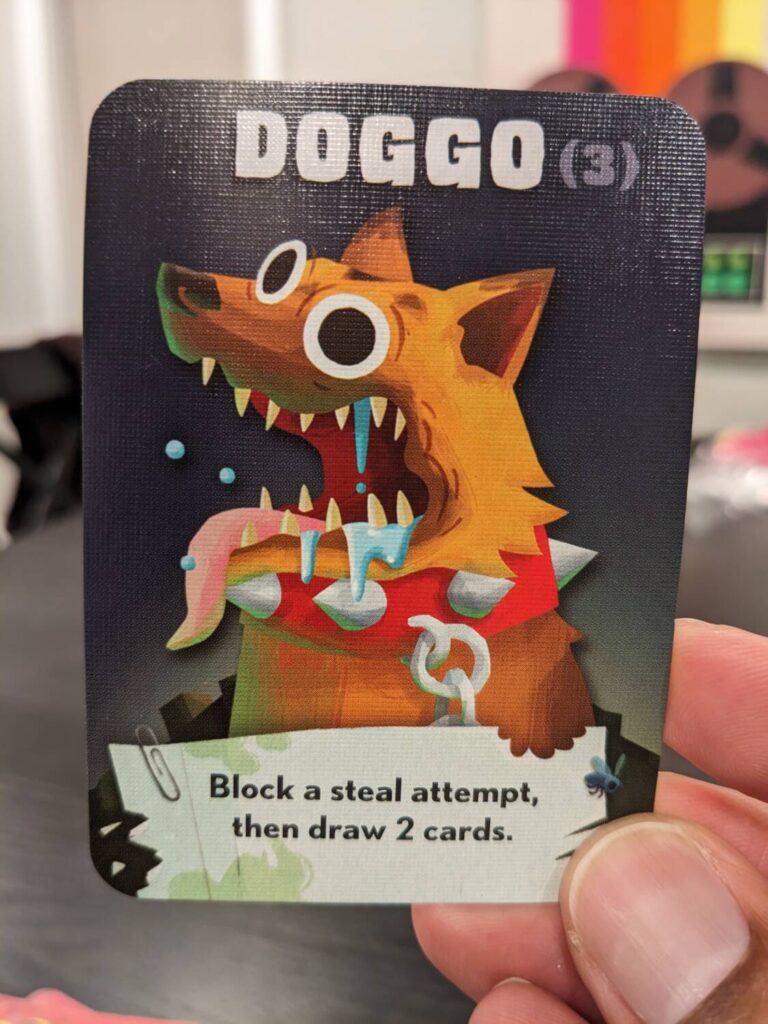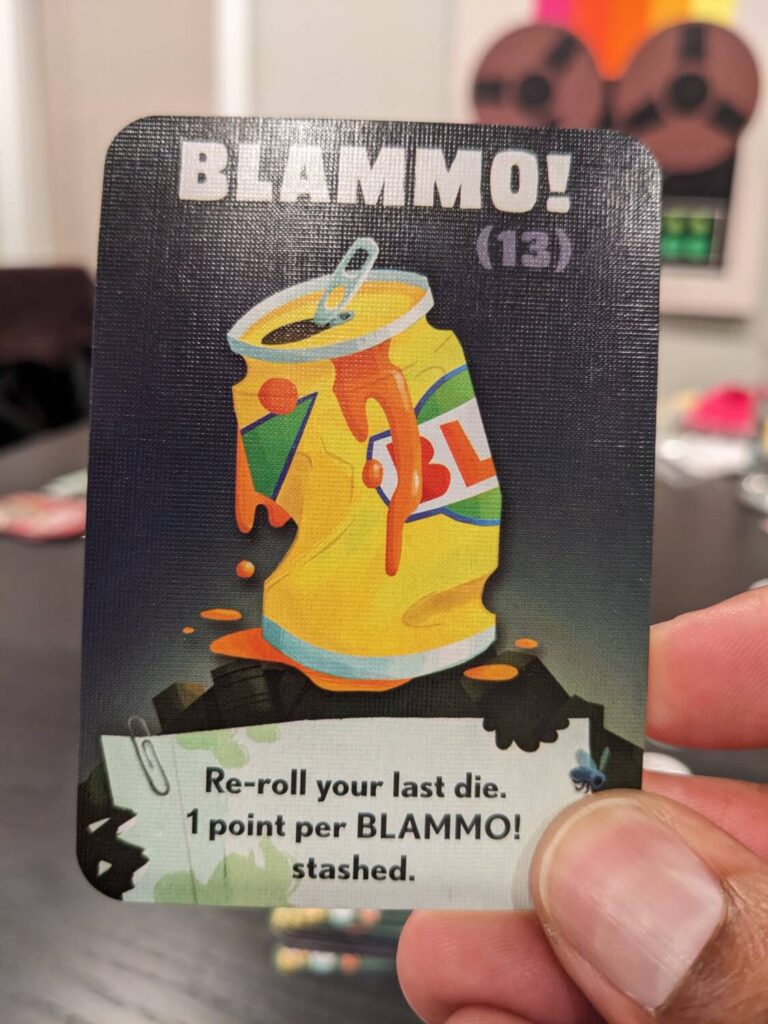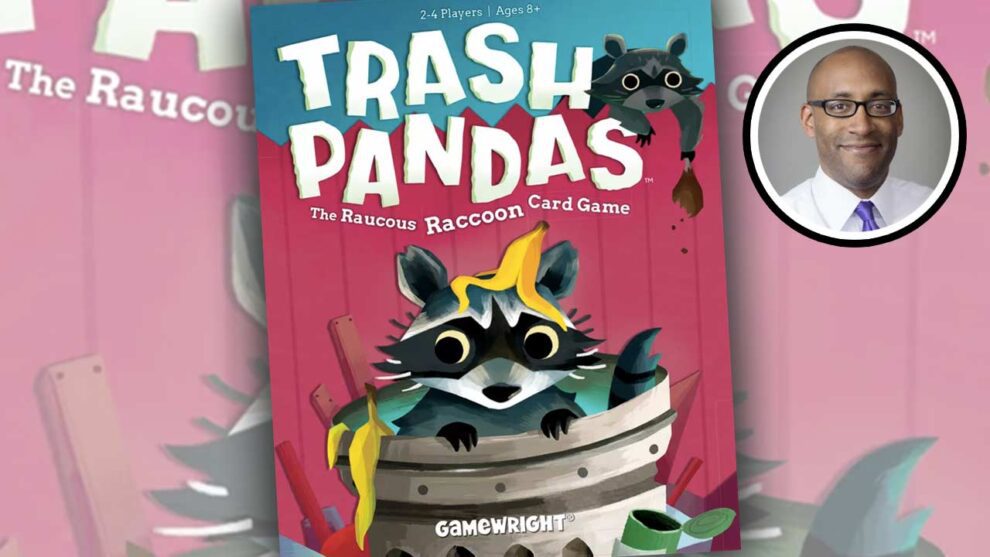Disclosure: Meeple Mountain received a free copy of this product in exchange for an honest, unbiased review. This review is not intended to be an endorsement.
Those who regularly read my content know that I score all games the same way: is it fun?
Trash Pandas (2017, Gamewright) didn’t set the world on fire when it was released. When I picked up a review copy at Gen Con 2023, I had never heard of it. But between plays with my daughter and other extended family, I discovered that Trash Pandas is plain old-fashioned fun.
That’s because it does the things that Gamewright does so well with all of its family-weight games. Trash Pandas can essentially be taught from its single card player aid. It has dice, push-your-luck elements, set collection scoring and fantastic artwork on the cards. The game length of 20 minutes means Trash Pandas doesn’t overstay its welcome, and it got the ultimate seal of approval—as our first game of Trash Pandas was ending, my daughter asked if we could play it again right away.

On a turn, players roll a six-sided die where each die face matches one of the six tokens available to a player each round. These include: draw cards from the “trash” (draw deck), stash cards to permanently shield them from theft actions by other players, steal a card, or maybe swap a token for a different one if you need some flexibility.
Players could roll once, take the token matching the die result, and execute that action to complete their turn. Or, they could roll again. If they get a different die result, they could now take two different actions based on the results. Players could keep this up or stop any time, but as soon as they roll a die face they’ve already rolled this turn, they bust—their turn immediately ends and they get to draw a single card as a consolation prize.
Taking more actions is good; risking it all might be bad. The cards that can be stashed all have different values, and a player scores 3-7 points if they are the owner of the most of a particular card when the game ends (after the draw deck runs out). Some cards have actions that let you re-roll. Others let you steal cards. Others block a steal action, then let you flip the tables on that opponent by stealing from them.

Our learning game took about 30 minutes; subsequent games took about 20 minutes.
Trash Pandas isn’t perfect; it does have a runaway leader problem when a player rolls well, particularly early in the game when other players may not have ways to protect themselves from getting robbed on consecutive turns. And some children won’t enjoy being targeted with steal actions, particularly the Shiny card, allowing a player to break the stash rule and steal a card in someone else’s stash (that area that you thought was permanently protected).
For an easy on-ramp to family fun with a cute theme, dice and risk mitigation, Trash Pandas worked well for my family. I didn’t try it with my game groups, so I’m not sure this would land in the same way with adults. But, for my children? It’s a solid raccoon-mendation! (Thanks, Tom!)












This sounds like it would be great with kids, as you say. If I only had little ones still in the house.
Thanks for a great review.